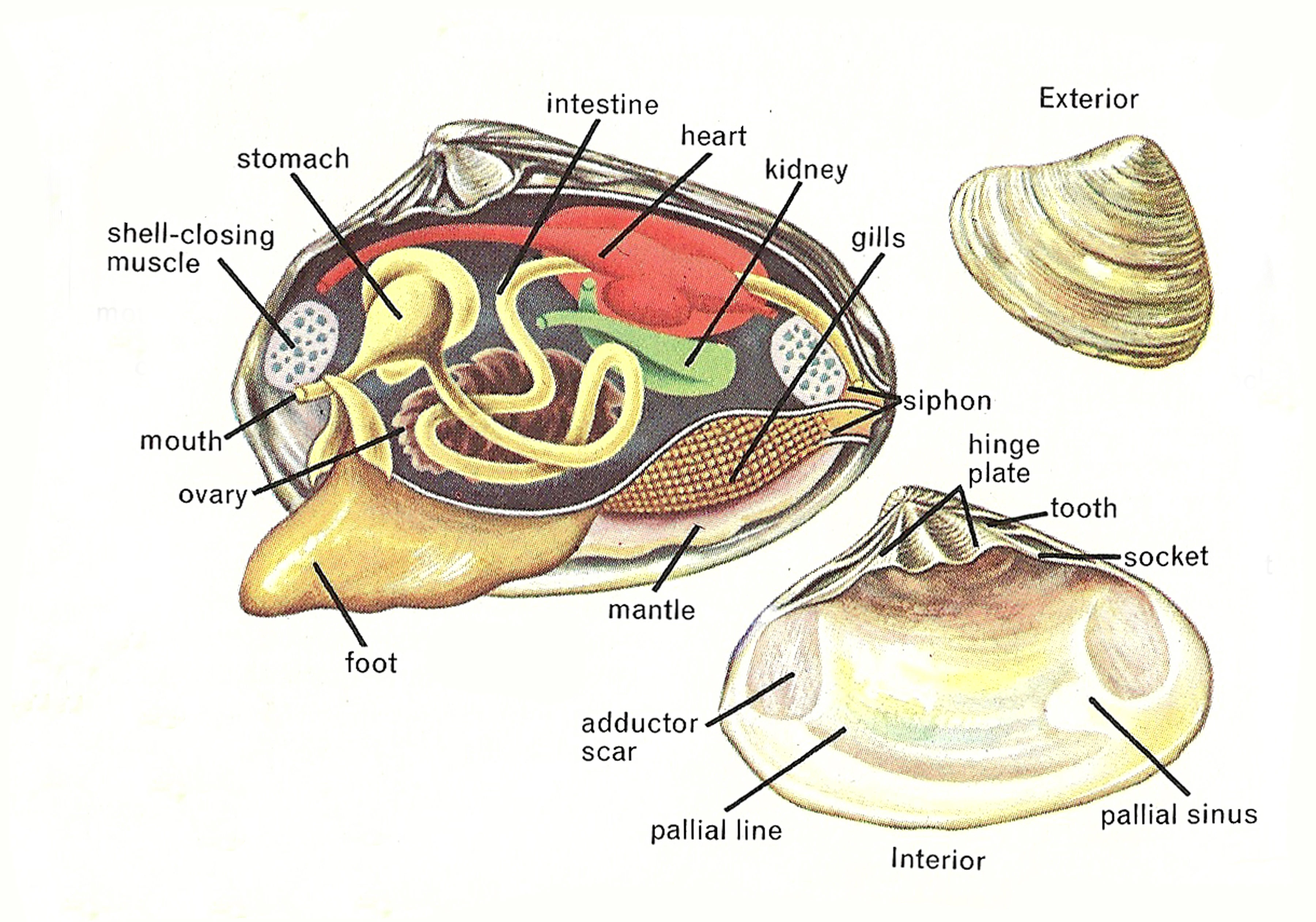Clams are a type of bivalve mollusk that are commonly found in oceans and freshwater habitats around the world. Here is a brief description of the labeled parts of a clam:
- Adductor muscle: The large muscle that holds the two halves of the shell together and allows the clam to open and close its shell.
- Mantle: The soft, fleshy part of the clam that lines the inside of the shell and is responsible for secreting the shell material.
- Shell: The hard, bivalve structure that protects the clam’s soft body.
- Siphon: The long, tubular structure that extends from the clam’s body and is used for both feeding and respiration.
- Foot: The muscular structure that extends from the clam’s body and is used for movement and attachment.
- Gills: The delicate, feathery structures that are responsible for filtering oxygen and nutrients from the water.
- Mouth: The opening at the center of the clam’s body that is surrounded by two rows of tiny tentacles.
- Digestive system: The internal organs that are responsible for breaking down food and extracting nutrients.
- Reproductive system: The internal organs that are responsible for producing eggs or sperm.
- Nervous system: The system of nerves and ganglia that control the clam’s movements and responses to its environment.
These are the main labeled parts of a clam. Clams are often harvested for their meat, which is used in a variety of dishes such as clam chowder and clam linguine. They also play an important role in the marine ecosystem as filter feeders, helping to remove pollutants and particles from the water.




